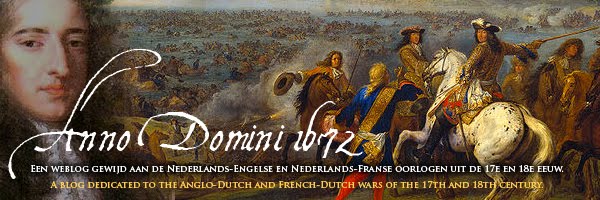
Veel van de beschrijvingen van het beleg van Groningen zijn afkomstig van Petrus (Pieter) Valckenier, die een soort geschiedenisboek schreef over de Guerre d'Hollande, onder de naam 'Verwerd Europa' en dit uitbracht in 1688.
Op google books was hij niet te vinden, maar wel op archive.org, zowel in full-text als in pdf formaat.
Hij schrijft over het Munsterse leger na afloop:
Verlies des Van de macht des Vyands , die defe Stad belegerde, is naderhand
uytgekomen defe Lijfte, die by de Munfterfche Officiers felfs gefor-
meert loude zijn :
Anno 1672. den 9en July is Groeningen belegert geworden van: 24000 man.
Daar af zijn voor de Stad gefnevelt aan foldaten en ruyters: 4536.
Gequetst: 1426
Overgelopen na de Stad omtrent: 600
Overgelopen na andere qnartieren omtrent: 5000
Overftens doodgebleeven : 3
Overste Lieutenants dood: 2.
Capiteynen dood: ó3
Twee hooge Officieren binnen de Stad gevangen: 2
11632.
Valkenier geeft de volgende redenen voor het opbreken van het beleg: sommigen weten het aan de Keizerlijke en Brandenburgse hulptroepen én de slechte staat van het leger. Anderen stellen dat de bisschop zijn kanonnen en mortieren met teveel kruit laadde waardoor ze onbruikbaar raakten, de zware verliezen, het vollopen van de loopgraven met regenwater en de sterke verdediging.
Nu waren de Munstersen wel weg voor Groningen, maar ze zaten nog in Winschoten en Oude- en Nieuweschans en uitermate vervelend was hun uitvalsbasis Coevorden, van waaruit ze nog diverse strooptochten organiseerden.
~~
One of the contemporary works on the Guerre d'Hollande is a book called 'Verwerd Europa', written by Petrus (in dutch 'Pieter' which you pronounce as 'Peter') Valckenier. His book is not on googlebooks but on archive.org and above you can find the link for the pdf version, which is a bit more useful than the full text version. Valkenier was a smart man who took William III's side on the right time and later got a career as an ambassador. He gives the following reasons for the failure of the siege: some claim the threat of Brandeburg and the Empire plus the bas state of his army. Other blame the Bishop himself who ordered double charges for his guns with detrimental results, his heavy losses (half his force with a lot of officers). Also the august rains made the trenches a rather unpleasant place to be and as a true patriot Valkenier mentions as the main reasons the gloriuos defenders.
Well, actually the war wasn't over. The Munster troops still held the town of Winschoten and the fortresses of Oudeschans and Nieuweschans. And they held Coevorden, as a base for their raids.
The picture is of 'the other Bock' painting.


















.jpg)
































